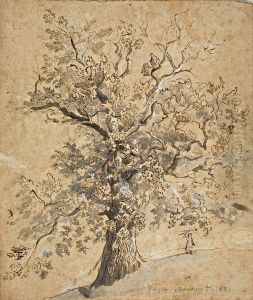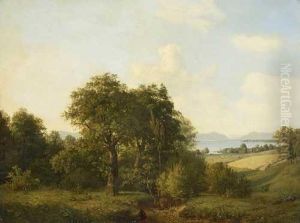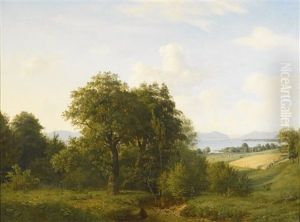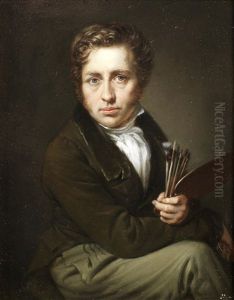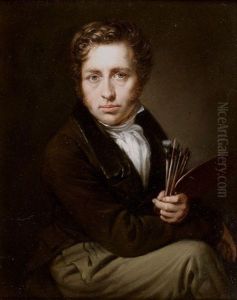Johann Christian Ziegler Paintings
Johann Christian Ziegler was a German painter and sculptor who was born in 1696 in Leipzig. He was a notable artist of his time, primarily working during the Baroque period, which was characterized by its grandeur, drama, and movement. Ziegler's work, however, is not as widely recognized today as that of some of his contemporaries, and as such, detailed biographical information about him may be scarce compared to more renowned artists of the era.
Ziegler's career unfolded in an age dominated by the likes of Johann Sebastian Bach in music and Johann Joachim Winckelmann in art history, both of whom were his contemporaries in the German-speaking world. While Ziegler might not have achieved the same level of fame, his work still contributed to the rich tapestry of Baroque art. He was known for his religious paintings, which were typical of the period, as well as for his sculptures. His art would have served both decorative and didactic functions, aiming to inspire and educate viewers through visual splendor and emotional intensity.
It is likely that Ziegler received his artistic training in the workshop system that was prevalent in Europe at the time. Artists typically learned their craft as apprentices to established masters, and it was through this system that they would have gained the technical skills and artistic knowledge necessary to pursue their own careers. Ziegler, like many artists of his time, would have been influenced by the works of Italian masters, as the Baroque style originated in Rome in the early 17th century before spreading throughout Europe.
Though specific details of Ziegler's life are not well-documented, it is known that he lived through significant historical events, including the War of Spanish Succession and the early stages of the Enlightenment. These events, while primarily political and philosophical, undoubtedly had an impact on the cultural and artistic environment in which Ziegler worked.
Johann Christian Ziegler's contribution to the arts came at a time when the Baroque style was evolving into the Rococo, and his works might have reflected this transition. Unfortunately, due to the limited information available, Ziegler's individual style and its development over time are not thoroughly chronicled in art historical literature. He passed away in 1770, leaving behind a body of work that, while perhaps not as celebrated as that of some of his peers, remains a testament to the rich diversity of artistic expression during the Baroque era in Germany.
